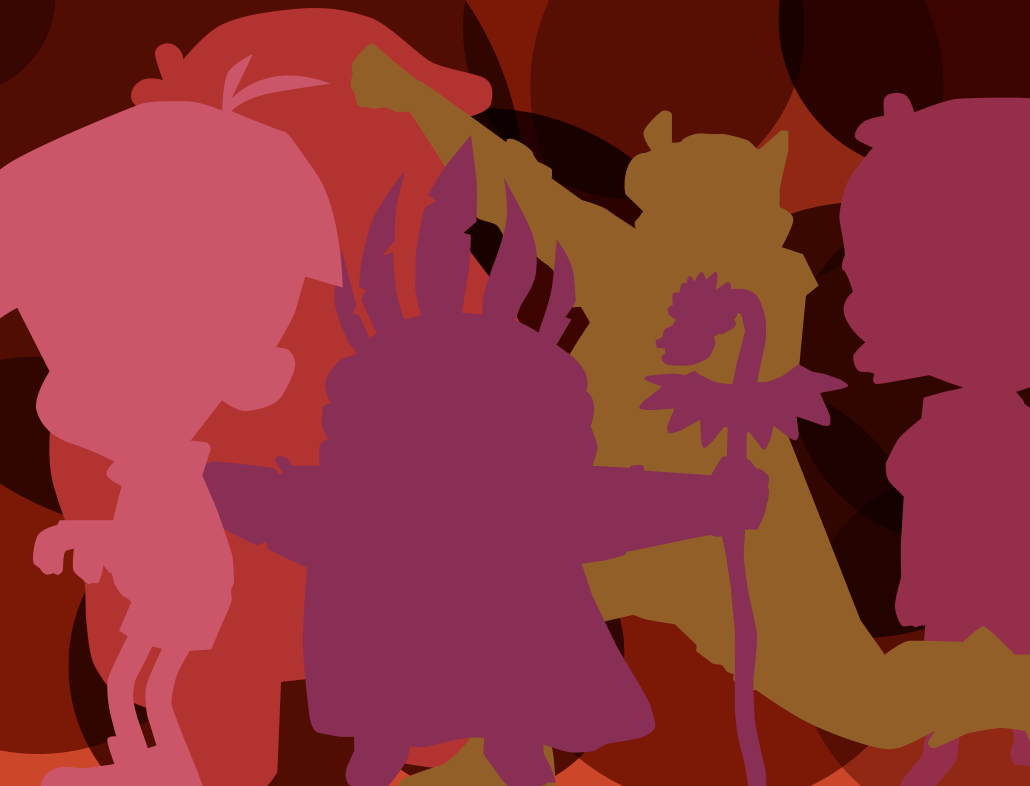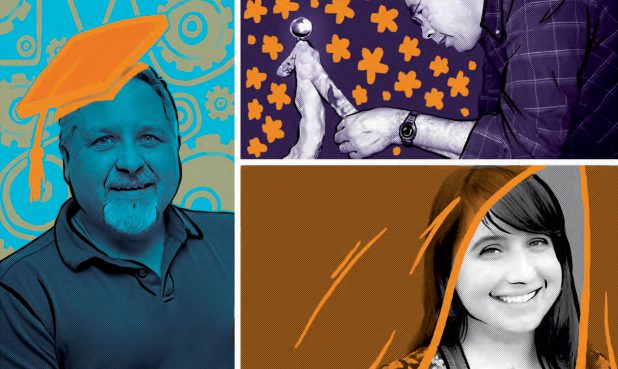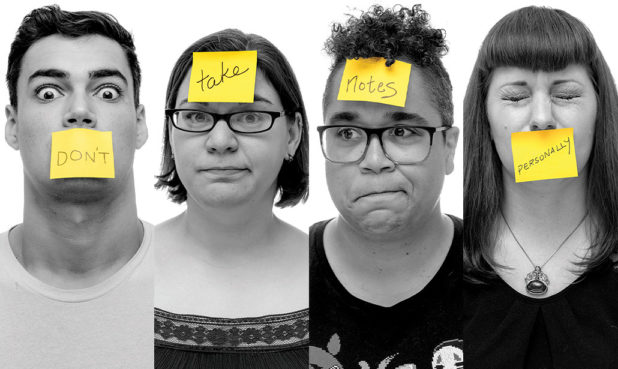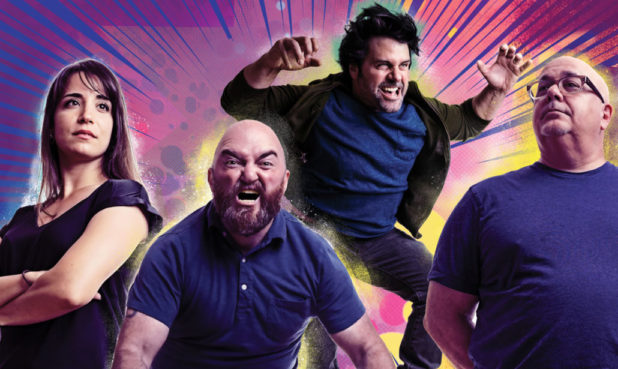But, as the Spider-Man cartoons and comics have taught us, with great power comes great responsibility—and great opportunity as well. Specifically, animation offers the opportunity to depict cultural diversity, engage children in the dialogue at a young age and perhaps eventually start bringing down barriers.
“I think everyone stereotypes until they learn and grow and eventually replace that incomplete knowledge with real facts.”—Diego Molano
While there has been significant growth in including people of different races, genders, sexualities, religions, body types and more on screen, the trick is figuring out how to depict all of this without resorting to stereotypes—particularly now, as fans and the media are quick to put any and all character decisions under microscopes.
Diego Molano, who created the new Cartoon Network series Victor & Valentino as an ode to “the pre-Columbian mythologies and folklore” he learned as a child, says that stereotyping happens when we “generalize and fill in the blanks when encountered with things that are not within our experience.” A perfect example? He says that while Latinx people “have a common history,” they also “have the widest diversity of ethnicities” and these cultures don’t always perfectly overlap.
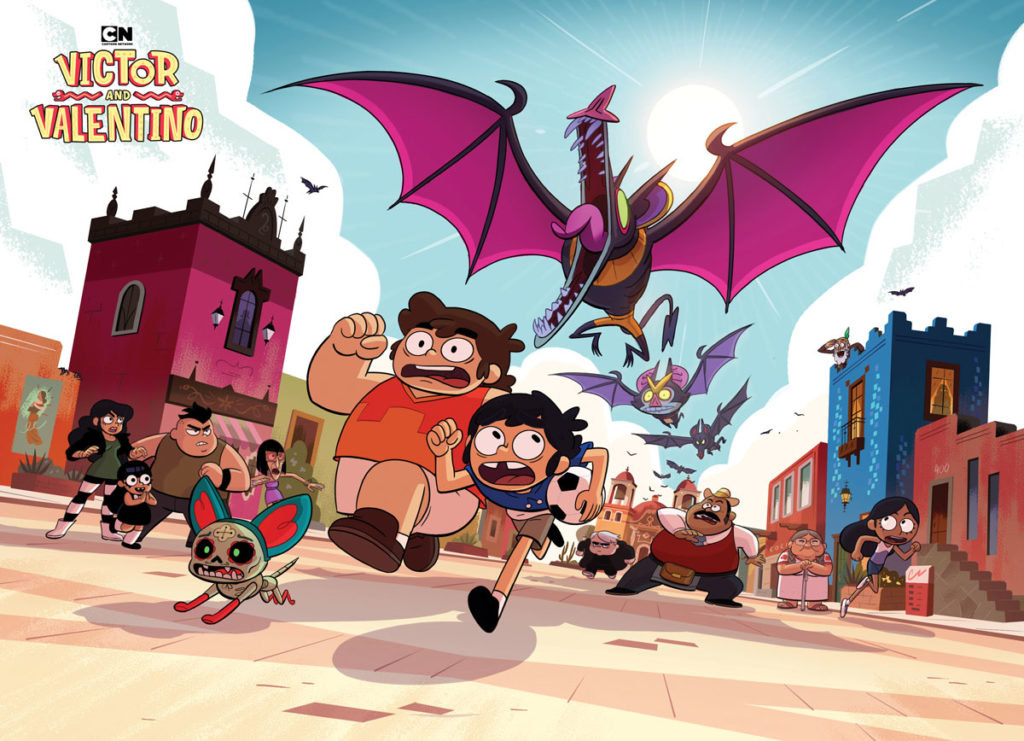
“For me, it is such a pleasure to research and learn new things about people and culture,” Molano says. “I think everyone stereotypes until they learn and grow and eventually replace that incomplete knowledge with real facts. We just have to do that more often. I think if we do, we will find more similarities than differences in our human struggles while still being excited and delighted by the differences that our pasts have left us with.”
Jess Cuffe, a storyboard artist who has worked on the Marvel Rising projects, says she begged to be part of an undertaking that showed an array of female crime-fighters with various ethnic backgrounds and body shapes. Based on the comic series of the same name, the stories follow inspirational heroes like Miss America/America Chavez, an out and proud Latina whose independent streak is almost as strong as her need for speed, and Doreen Green/Squirrel Girl, a chipper woman who eschews conformity all the way down to her clothing and body type.
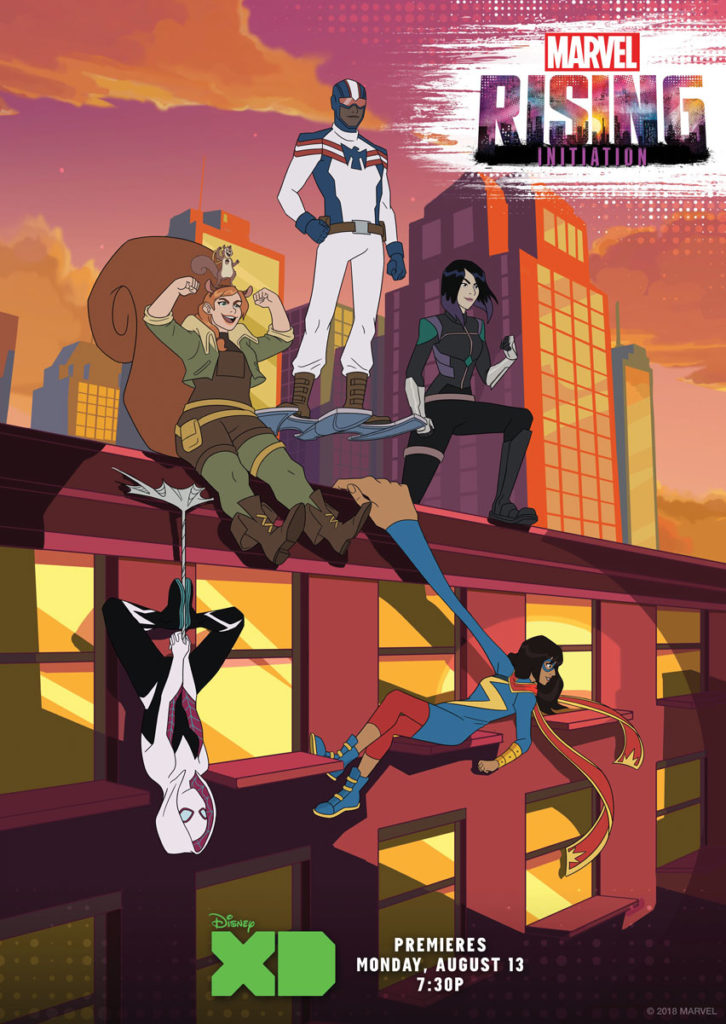
But these characters aren’t simply replicas of what’s seen on the printed page. What would be the fun in that?
“We’ve diversified [these characters] not just by their skin tone and the way they’ve grown up, but how they look apart from each other,” Cuffe says of converting them to animation. “It’s highlighting how people really look. In all honesty … we want [to celebrate] all kinds of kids and how they like to dress and who they are. ”
Part of this push for representation and accuracy means not being afraid to ask others for help. Marvel Comics Director of Content & Character Development Sana Amanat says she was excited to work with the animators to transform all the Marvel Rising characters for on-screen adventures. But there’s no denying that she was particularly pleased to work on Kamala Khan/Ms. Marvel, the Pakistani-American crime fighter whom she co-created and who only first appeared in the Marvel comics universe in 2013. For this animated version, some things stayed a part of Kamala or got an upgrade. Her trademark gold bangle bracelet, itself a link to her cultural identity, now has a secret compartment for her mobile. She’s also traded in her boots for sneakers.
“We wanted something that would have a significant female cast, but still [be] an action adventure that was appealing to boys and girls,” adds Cort Lane, Marvel Entertainment’s Senior Vice President of Animation and Family Entertainment.
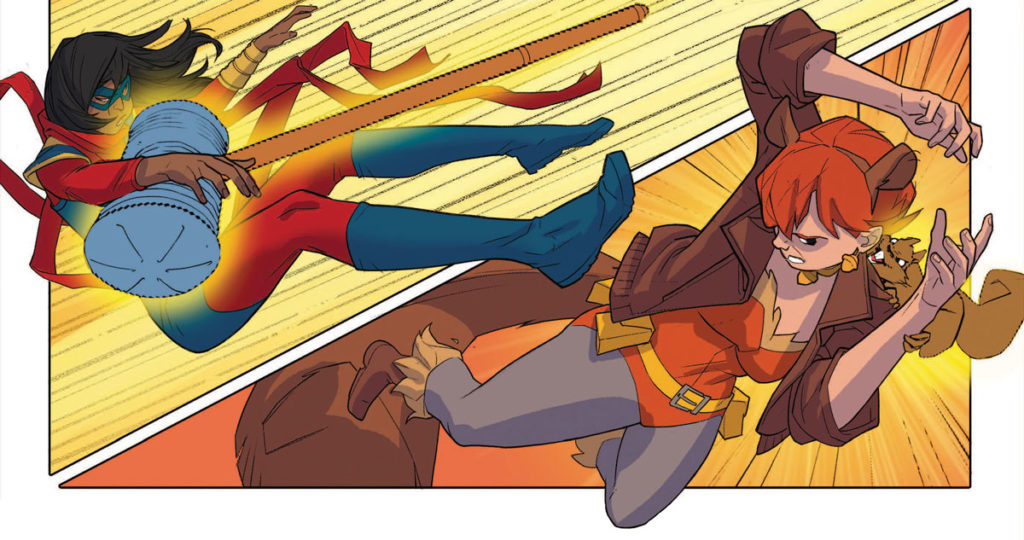
But, he adds, they didn’t want to go about this in a “prescriptive way” of making these inclusive stories just for inclusion’s sake and therefore held several conversations with young girls in their target demographic to understand what they would want to see in the stories.
“Marvel’s philosophy is our stories are characters who are just like you and who live outside your window, and so they should reflect the diversity of the world.”—Cort Lane
“Marvel’s philosophy is our stories are characters who are just like you and who live outside your window, and so they should reflect the diversity of the world,” Lane says.
This was similarly the focus of Harvey Street Kids, the DreamWorks Animation Television series for Netflix that’s based on the old Harvey Comics. Little Audrey is now a rambunctious tomboy with three ponytails and a lightning bolt T-shirt. Little Dot is a mature-beyond-her-years African-American science whiz. Little Lotta shares her original incarnation’s love of food, but Supervising Producer Aliki Theofilopoulos says they wanted to go beyond that one note and have “her be more passionate with a love for life” while still keeping her body type. This all carries over to Harvey Street Kids’ secondary characters, all of whom are designed with thought-out behaviors and style to represent a multi-ethnic neighborhood utopia.
Peter Emmerich, Harvey Street Kids’ art director, says his design crew didn’t set out to check diversity boxes in as much as just create cool kids an audience would want to befriend or emulate. He says the design team had long conversations on how to update the characters—some of whom came to be in the middle of the last century—especially, he says in regards to “changing their clothes and changing their hair.” He also called upon his diverse animation team to help with accuracy, such as working with African-American colleagues to ensure that Dot’s hair looks realistic.
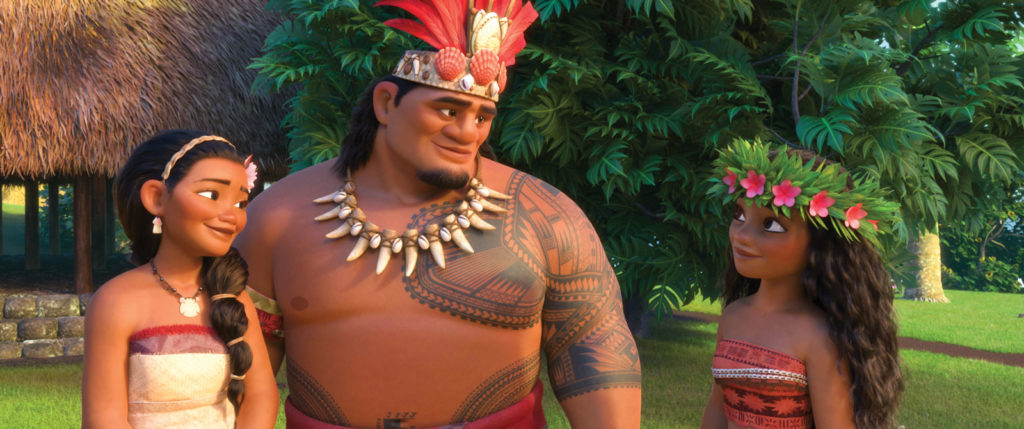 Courtesy of © Disney
Courtesy of © Disney“I think it’s important to have shows where kids can see themselves in [it],” adds Victor & Valentino’s Molano. “Being multicultural myself, I always looked for characters that I could relate to as a kid, but there were very few. I feel like I am now creating the show that I wished existed when I was growing up.”
“[Big Studios] need to push the envelope because they are educating the future…
they have the ability to risk.” —Cinzia Angelini
Similarly to Molano’s philosophy of delving deeper into a culture to represent it more accurately, the team behind Disney’s 2016 Polynesian-themed Moana immersed themselves in that culture.
“The more you learn about the Polynesian culture, the more you realize how stereotypes have kind of undersold it,” says David Derrick, who was on the story team, and has his own Samoan ancestors. “They had the largest cultural footprint of any culture prior to Western expansion … it was a culture defined not by how they lived on the land, but how they navigated from the islands.”
Research included hiring a choreographer to teach their staff the art of traditional tribal haka (or war dance)—even blessing artists in order to allow them to depict the dance—and debating with anthropologists and scholars on the potential anachronisms of their tribal characters’ wardrobes and color palettes, but producer Osnat Shurer says they had a big ask for consultant Fiona Collins. The Samoan actress and playwright let the staff douse her with water so they could see how her long wavy black hair dried.
The Past and Present
Of course, these progressive attempts at representation are fairly new practices. It’s a well-known fact that racism, sexism and other issues are shameful parts of animation’s past—even if they were invoked in good faith at the time. Tom Sito, an animation historian and former Guild president, says just look at the 1943 Bob Clampett cartoon Coal Black and de Sebben Dwarfs. He says there’s no arguing that it’s “unbelievably racist,” even if Clampett was a huge jazz and swing music fan and was “doing his homage” to the people he idolized.
Similarly, the Looney Tunes character Speedy Gonzales is cringe-worthy now. Sito says it came about in the 1950s and was made in tribute to Frank Gonzales, a ladies man in the Warner Bros. animation department who garnered the nickname because he could draw so fast that he could finish in time to flirt with the single women in the Ink and Paint department.
“…minorities and women on staff need to speak up and not be afraid to push back on stereotypes that others might not see.”—Damil Bryant
Sito reminds that early “cartoons and comics all worked off the pop culture of the period,” often gearing themselves to immigrants who may not have been able to read English and were therefore “heavy on ethnic culture because America at the time was a deep ethnic mix.”
Themes like the white savior fighting an evil foreign face may have diminished to some degree, as evident by both the live-action and animated Black Panthers, but Sito reminds that there was a time when Milton Caniff’s WWII-era Japanophobic drawings for the U.S. Army’s Pocket Guide to China were freely condoned by our government. Last year, comedian Hari Kondabolu’s truTV documentary The Problem with Apu ignited a conversation about the long-time Simpsons character who both is voiced by a white man (Hank Azaria) and panders to the simpleton immigrant stereotype. Fox executives recently said it was up to the Simpsons producers to decide if they would end the character.
The dialogue continues as awareness builds. Sito, whose resume includes Disney’s Pocahontas and DreamWorks’ The Prince of Egypt, is well aware of sensitivity issues that must be addressed and says “it’s a consciousness raising process.”
Influencing the Next Generation
Cinzia Angelini is an animation director who has given a TED Talk on the importance of using the medium to highlight diversity and also discuss more serious topics, like her project Mila about child victims of war. She says she hopes the success of films with diverse storytelling will help this cause.
“Big studios are responsible because they’re educating; they’re influencing young generations,” she says. “They need to push the envelope because they are educating the future … they have the ability to risk.”
She also says, as animators, the onus is on us to learn about different cultures and not assume that you’re only capable of designing for people who share your background. Angelini says we are “fortunate that we live and work in Los Angeles where all kinds of people live and exist. So it’s not that hard within your network to find people who can give you real perspective of how somebody of this race or this religion react to this situation.”
Meanwhile, Damil Bryant, a storyboard artist at Bento Box Entertainment, says that the minorities and women on staff need to speak up and not be afraid to push back on stereotypes that others might not see. He explains that this could mean covering “something that’s going on now like police brutality, but making the person that’s getting beat up not black.” For monsters and other nonhumans, he says he makes a point to “exclude race.”
“I like to use reference and how other shows and movies have done it in the past,” he says.
Bryant says he’s seen this awareness in younger artists, especially because he says the trend toward streamlining and simplistic designs “give more opportunity to work on a style.”
Chase Conley, who is an animation director at DreamWorks TV, says even fleshing out these background characters “adds tangibility to the world; it grounds the story.” To this point, he says he tries to design characters that go against type such as avoiding making an Asian character meek or “if it has to do with a female character, I won’t hyper-sexualize them if that’s not in their character.”
While inclusion and diversity are necessary parts of animation, they only work if they don’t feel forced.
“I think the creative should do whatever is natural to them,” says Mark Davis, who is also a director on Victor & Valentino. “It would be nice to have some representation all across the board, but that’s not everyone’s experience. I’m always a fan of staying true to whatever you feel is natural to you as a creator.”
